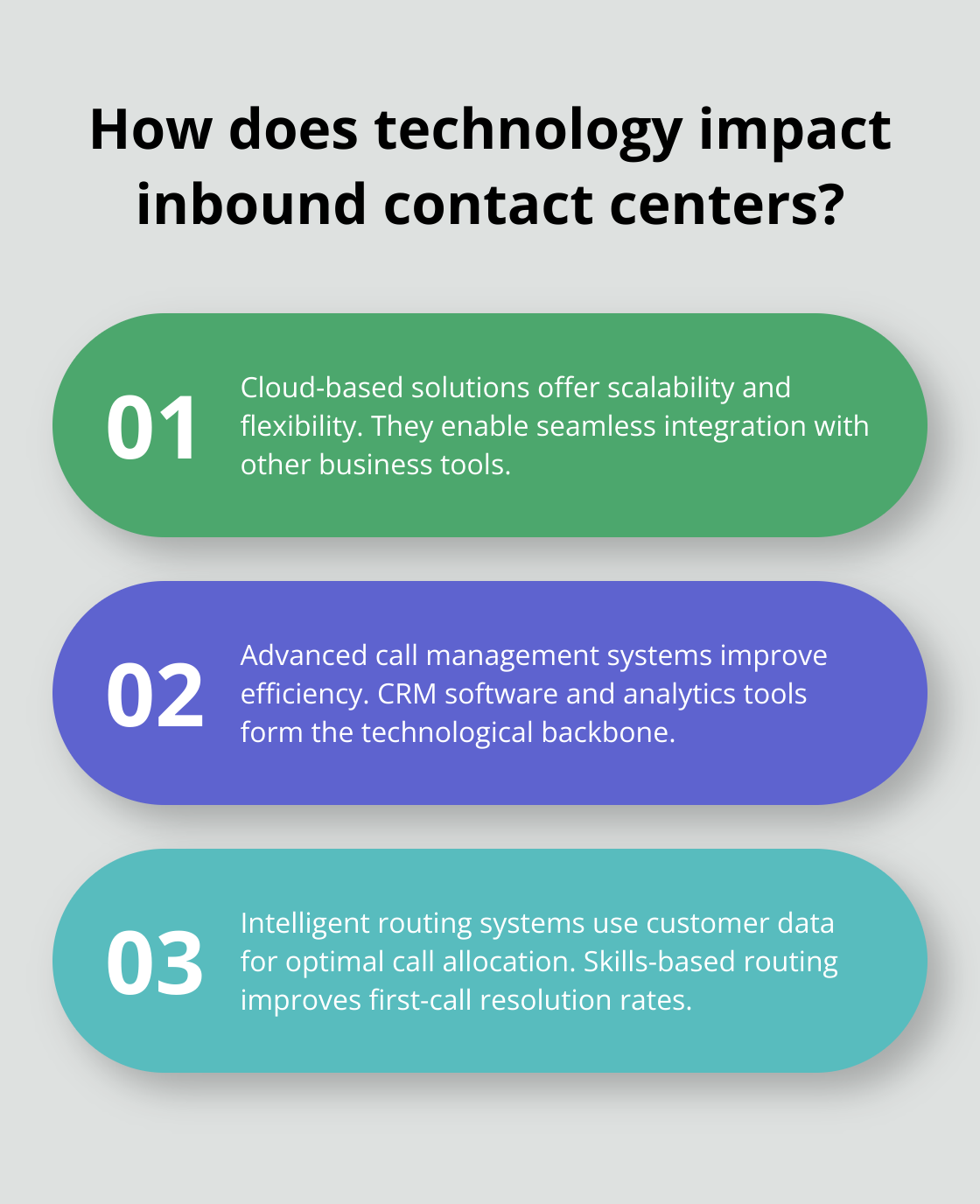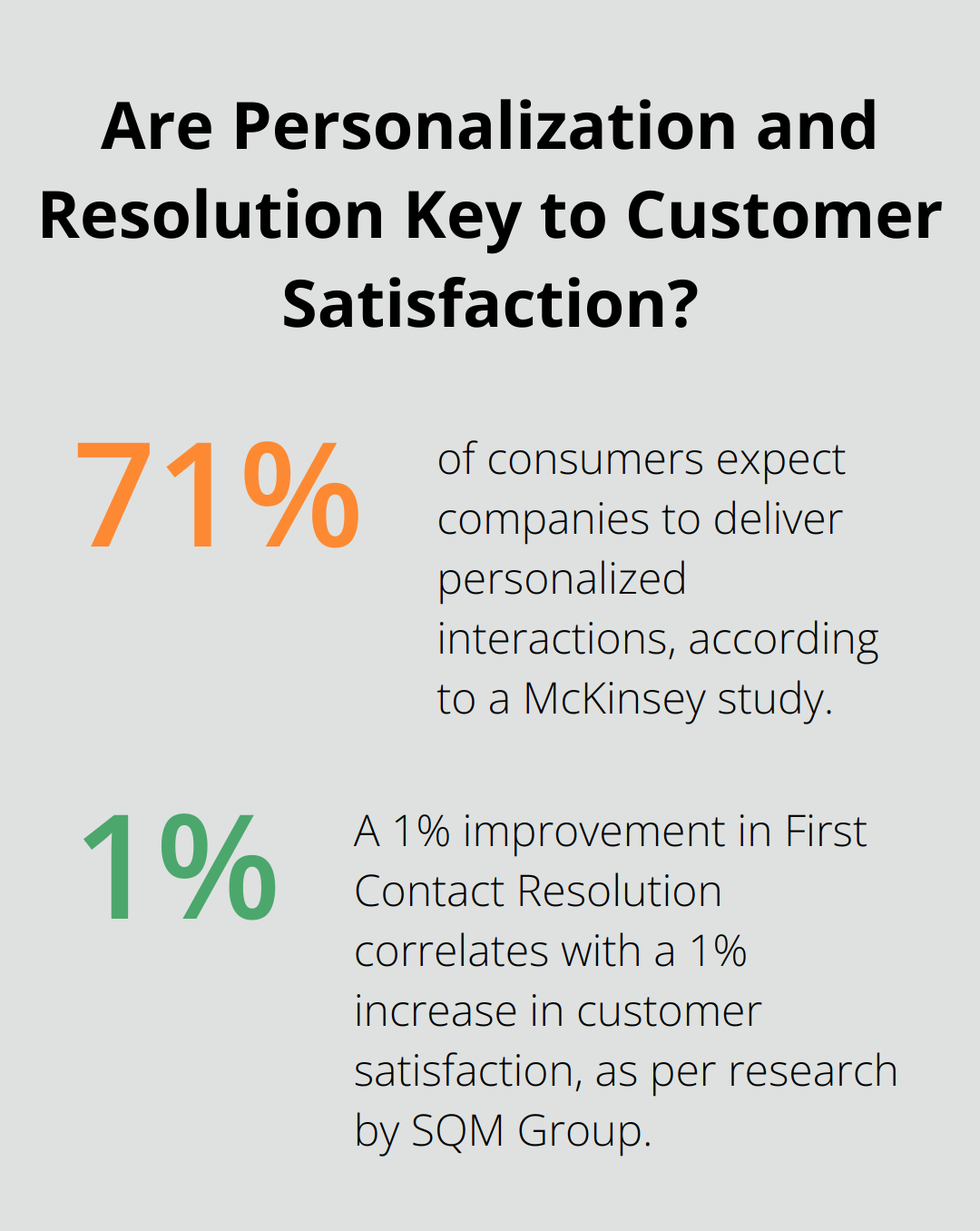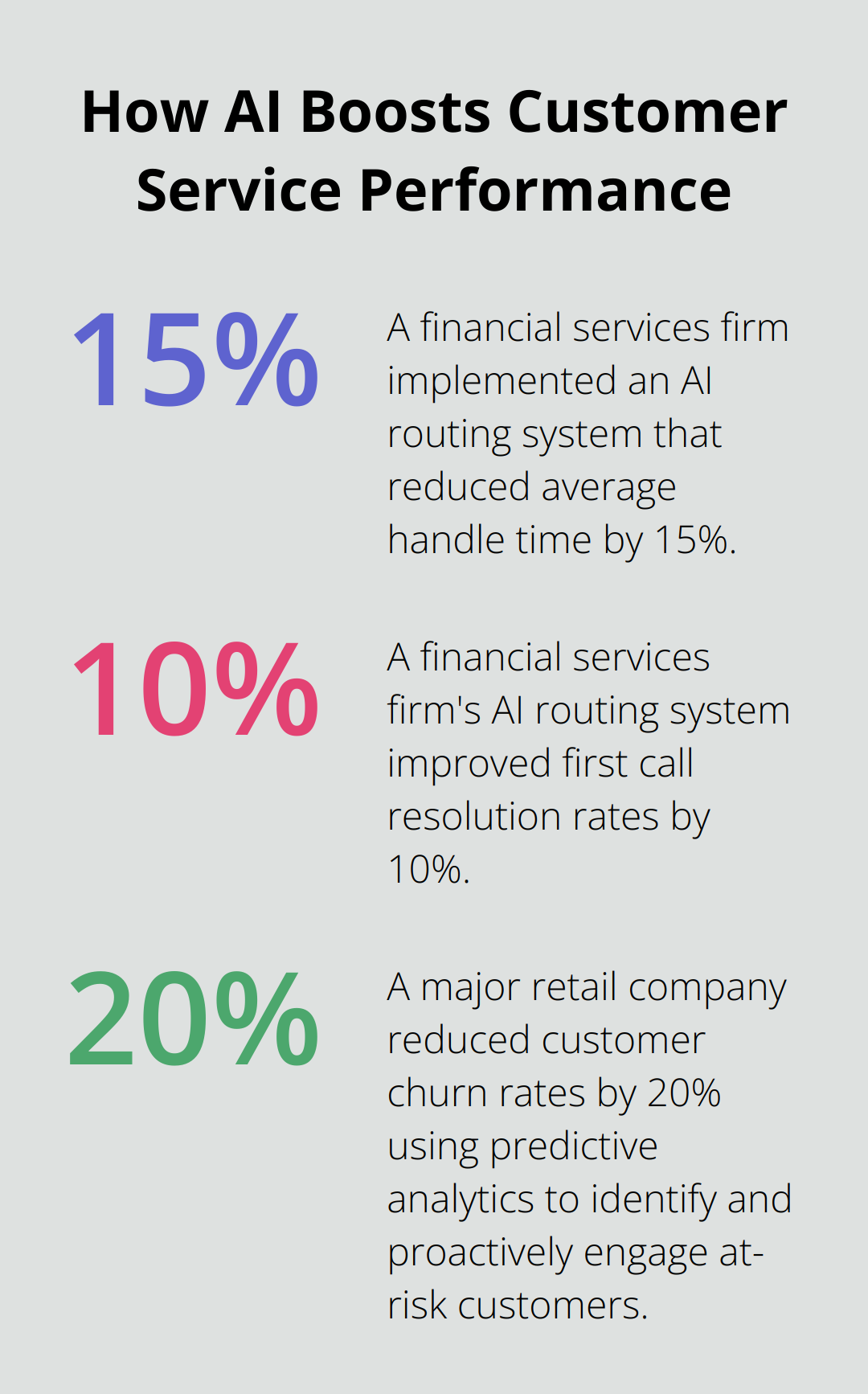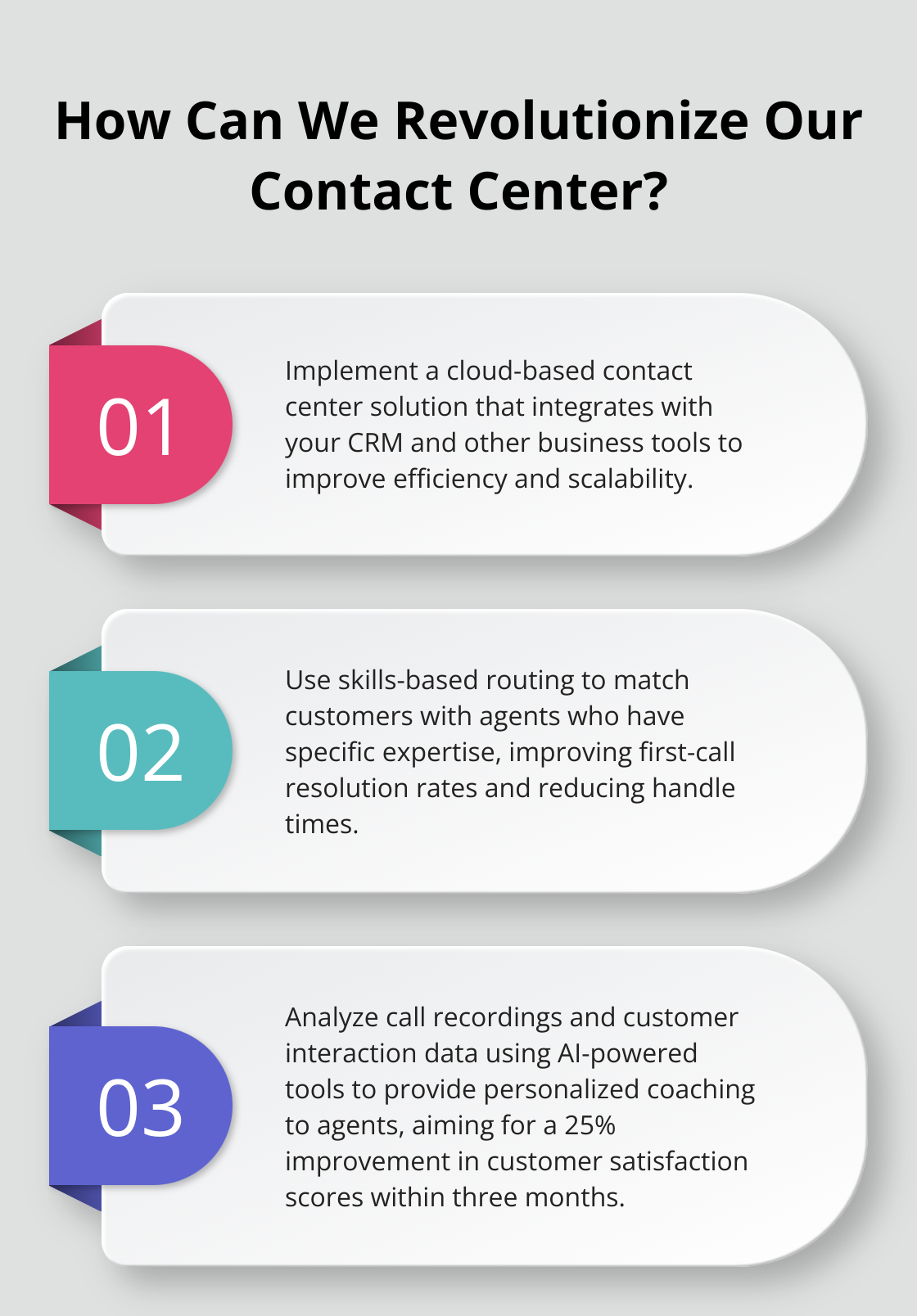Inbound contact centers are the frontline of customer service, handling millions of customer inquiries daily. At Outsource Consultants, we’ve seen how effective strategies can transform these centers into powerful customer satisfaction engines.
This blog post explores key components, best practices, and innovative technologies that drive success in contact center inbound operations. We’ll share insights to help you optimize your customer service and stay ahead in today’s competitive landscape.
What Makes an Inbound Contact Center Effective?
State-of-the-Art Technology
The backbone of any effective inbound contact center is its technological infrastructure. This includes advanced call management systems, customer relationship management (CRM) software, and analytics tools.

Cloud-based contact center solutions stand out as a prime example. These platforms offer scalability, flexibility, and cost-effectiveness that traditional on-premise systems can’t match. They also enable seamless integration with other business tools, which improves overall efficiency.
Skilled and Engaged Agents
While technology plays a vital role, the human element remains irreplaceable in customer service. Well-trained and motivated agents are the lifeblood of any successful inbound contact center. A study by Invoca revealed that contact center turnover is high and agent job satisfaction directly impacts customer satisfaction.
Contact centers should focus on comprehensive training programs that cover not just product knowledge, but also soft skills like empathy and active listening. Regular coaching sessions, performance incentives, and career development opportunities can significantly boost agent engagement and retention.
Smart Call Routing and Queue Management
Efficient call routing and queue management minimize wait times and ensure customers reach the most appropriate agent for their needs. Intelligent routing systems use data like customer history, agent skills, and current call volumes to make split-second decisions on call allocation.
Skills-based routing can improve first-call resolution rates. This approach matches customers with agents who have the specific expertise needed to handle their inquiry, which leads to faster resolutions.
Robust Knowledge Management System
A comprehensive knowledge base is an indispensable tool for both agents and customers. It serves as a centralized repository of information, enabling quick access to accurate and up-to-date information.
An effective knowledge management system should be easily searchable, regularly updated, and integrated with other contact center tools. This integration allows agents to quickly pull up relevant information during calls, which reduces handle times and improves the accuracy of responses.
These four key components form the foundation of a high-performing inbound contact center. However, implementing these elements is just the beginning. The next section will explore best practices that can take your customer service to new heights.
How to Excel in Inbound Customer Service
Tailor Interactions to Individual Customers
Personalization has become a standard expectation in customer service. A McKinsey study reveals that 71% of consumers expect companies to deliver personalized interactions. To achieve this, contact centers should effectively use customer data. This involves the integration of CRM systems with call center software, providing agents with a comprehensive view of each customer. With this information readily available, agents can address customers by name, refer to previous interactions, and predict needs based on purchase history.
Prioritize First Contact Resolution
First Contact Resolution (FCR) stands as a critical metric for inbound contact centers. Research by SQM Group indicates that a 1% improvement in FCR correlates with a 1% increase in customer satisfaction. To enhance FCR rates, contact centers should focus on thorough agent training, empower agents to make decisions, and equip them with necessary tools for swift issue resolution. This may include access to a comprehensive knowledge base, the ability to escalate complex issues smoothly, and ongoing coaching to handle diverse customer scenarios.
Implement Seamless Omnichannel Support
Modern customers expect to reach out through their preferred channels (phone, email, chat, or social media) and receive consistent service across all platforms. An effective omnichannel strategy requires more than just offering multiple contact channels. It demands a unified system that allows agents to access customer information and interaction history across all channels, ensuring continuity in customer conversations.
Drive Continuous Improvement Through Data-Driven Insights
Successful inbound contact centers continuously monitor and improve their performance. This involves the collection and analysis of data from various sources (call recordings, customer surveys, agent performance metrics). Key Performance Indicators (KPIs) such as Average Handle Time (AHT), Customer Satisfaction Score (CSAT), and Net Promoter Score (NPS) should undergo regular monitoring. The real value comes from using these insights to drive meaningful improvements in processes, training, and technology. For example, if data indicates that certain types of inquiries consistently have longer handle times, this could signal a need for additional agent training or the creation of new knowledge base articles to address these issues more efficiently.

The implementation of these best practices can significantly enhance customer service quality in inbound contact centers. However, the customer service landscape continues to evolve, particularly with the advent of AI and automation technologies. The next section will explore how these cutting-edge tools are reshaping inbound contact centers and how businesses can leverage them for even greater success.
How AI Transforms Your Inbound Contact Center
AI-driven solutions dramatically improve contact center operations, offering unprecedented opportunities for efficiency and customer satisfaction.
AI-Powered Virtual Assistants Take Center Stage
Virtual assistants and chatbots now handle a significant portion of customer inquiries without human intervention. These AI-driven tools manage simple tasks like account balance inquiries, password resets, and basic troubleshooting. This frees up human agents to focus on more complex issues.
In a blinded case study from our CX Success Team, a major telecommunications company implemented an AI chatbot that now handles customer inquiries, improving customer experience. To design an effective virtual assistant, focus on natural language processing capabilities. This ensures it understands and responds to a wide range of customer queries effectively.
Predictive Analytics Enables Proactive Service
Predictive analytics uses historical data and machine learning algorithms to forecast future trends and customer behavior. This technology allows contact centers to anticipate customer needs and take proactive measures.

A retail giant used predictive analytics to identify customers likely to churn based on their interaction patterns. They proactively reached out to these at-risk customers with personalized offers, which reduced churn rates by 20%. To implement predictive analytics in your contact center, identify key data points that indicate customer satisfaction or dissatisfaction (such as frequency of calls, tone of voice, or specific keywords used during interactions).
AI-Driven Routing Streamlines Operations
AI-powered routing systems surpass traditional skills-based routing. These advanced systems analyze factors like customer sentiment, interaction history, and even real-time agent performance to make optimal routing decisions.
A financial services firm implemented an AI routing system that reduced average handle time by 15% and improved first call resolution rates by 10%. The system matched customers with agents who had successfully resolved similar issues in the past. When you implement AI routing, ensure your system has access to comprehensive customer data and real-time agent performance metrics for the best results.
AI Coaching Enhances Agent Performance
AI-powered quality assurance and coaching tools transform how contact centers train and support their agents. These systems analyze 100% of customer interactions, providing insights that would be impossible to gather manually.
A healthcare contact center used AI to analyze call recordings and provide personalized coaching to agents. This resulted in a 25% improvement in customer satisfaction scores within three months. To effectively implement AI coaching, establish a clear set of performance metrics and train the AI system on your specific industry terminology and best practices.
Final Thoughts
The landscape of inbound contact centers evolves rapidly, driven by technological advancements and changing customer expectations. Success in this dynamic environment requires a strategic blend of cutting-edge technology, well-trained agents, and customer-centric processes. The integration of AI and automation revolutionizes contact center inbound operations, enhancing efficiency and customer satisfaction.

We anticipate further advancements in AI and machine learning, leading to more sophisticated customer service solutions. Voice recognition, sentiment analysis, and real-time language translation (among others) will enable contact centers to provide more personalized, efficient, and effective service across all channels. The most successful inbound contact centers will strike the right balance between technological innovation and human empathy.
Outsource Consultants helps businesses navigate this evolving landscape with expertise in optimizing call center services and implementing AI technology. We provide tailored solutions that align with unique business needs and culture, ensuring seamless integration of outsourced services and cutting-edge technologies. Our commitment focuses on enhancing customer experience while reducing operational costs for long-term success in an increasingly competitive market.






